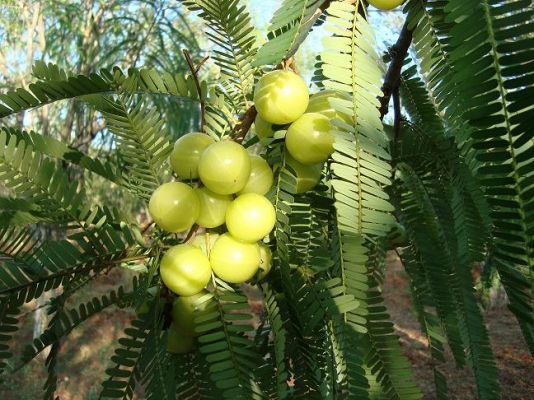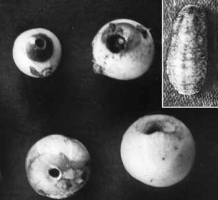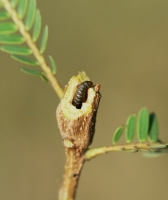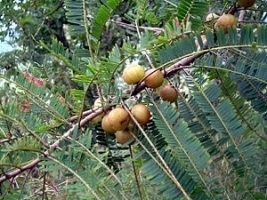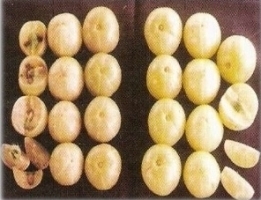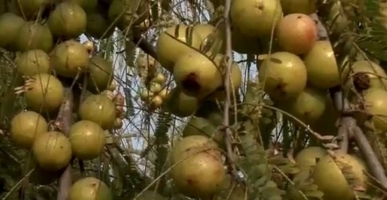Banarasi: It is an early maturing variety, matures in mid-October to mid-November. It has large sized fruits i.e. 48gmin weight, skin is smooth and fruits are not for preservation purpose. The variety contains 1.4% fiber content. The average yield is 120 kg/tree.
Krishna: It is also an early maturing variety, matures in mid-October to mid-November. It has medium to large sized fruits i.e. 44.6gm in weight, skin is smooth and stripe is well marked. The variety contains 1.4% fiber content. The average yield is 123 kg/tree.
NA-9: It is also an early maturing variety, matures in mid-October to mid-November. It has large sized fruits i.e. 50.3gm having oblong shape, skin is smooth and thin. The variety contains low fiber content i.e. 0.9% and highest ascorbic content i.e. 100gm. It is used for making jams, jellies and candies.
NA-10: It is also an early maturing variety, matures in mid-October to mid-November. It has medium to large sized fruits i.e. 41.5gm in weight, skin is rough and have 6 distinct segments. Flesh is whitish-green in color having 1.5% of fiber content.
Francis: It is a mid-season crop from mid-November to mid-December. It has large size fruit i.e. 45.8gm in weight having greenish white in color. Fiber content is moderate i.e. 1.5%. The variety is also known as Hathi Jhool because of its drooping branches.
NA-7: It is a mid-season crop from mid-November to mid-December. The fruits are medium to large sized i.e. 44gm in weight and are greenish-white in color. The fiber content is 1.5% in this variety.
Kanchan: It is a mid-season crop from mid-November to mid-December. The fruits are small in size i.e. 30.2gm in weight. It contains 1.5% fiber content and has medium ascorbic acid content. The average yield is 121 kg/tree.
NA-6: It is a mid-season crop from mid-November to mid-December. The fruits are medium in size i.e. 38.8gm in weight. The fiber content is lowest i.e. 0.8%, ascorbic content is moderate i.e. 100gm and have low phenolic content. It is used for making jams and candies.
Chakiya: It is a late maturing crop, matures in mid-December to mid-January. The fruits are medium sized i.e. 33.4gm in weight. It contains 789mg/100g of ascorbic content, 3.4% pectin content and 2% fiber content. It is used for making pickles and drying shreds.
NA-7: It is a mid-season crop from mid-November to mid-December. The fruits are medium to large sized i.e. 44gm in weight and are greenish-white in color. The fiber content is 1.5% in this variety.
Kanchan: It is a mid-season crop from mid-November to mid-December. The fruits are small in size i.e. 30.2gm in weight. It contains 1.5% fiber content and has medium ascorbic acid content. The average yield is 121 kg/tree.
NA-6: It is a mid-season crop from mid-November to mid-December. The fruits are medium in size i.e. 38.8gm in weight. The fiber content is lowest i.e. 0.8%, ascorbic content is moderate i.e. 100gm and have low phenolic content. It is used for making jams and candies.
Chakiya: It is a late maturing crop, matures in mid-December to mid-January. The fruits are medium sized i.e. 33.4gm in weight. It contains 789mg/100g of ascorbic content, 3.4% pectin content and 2% fiber content. It is used for making pickles and drying shreds.

